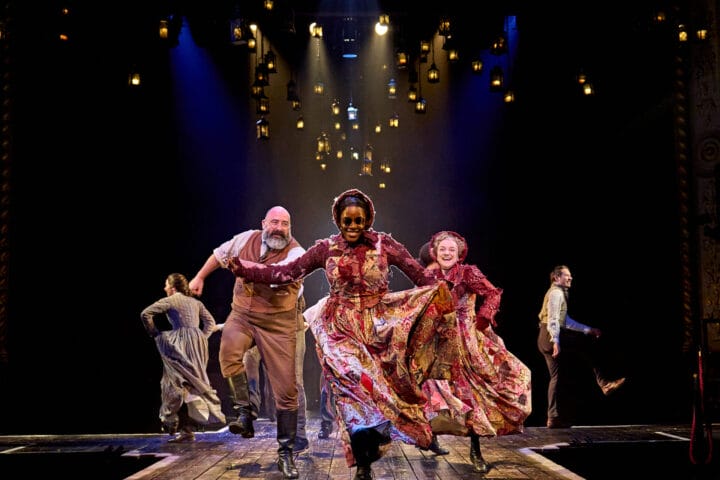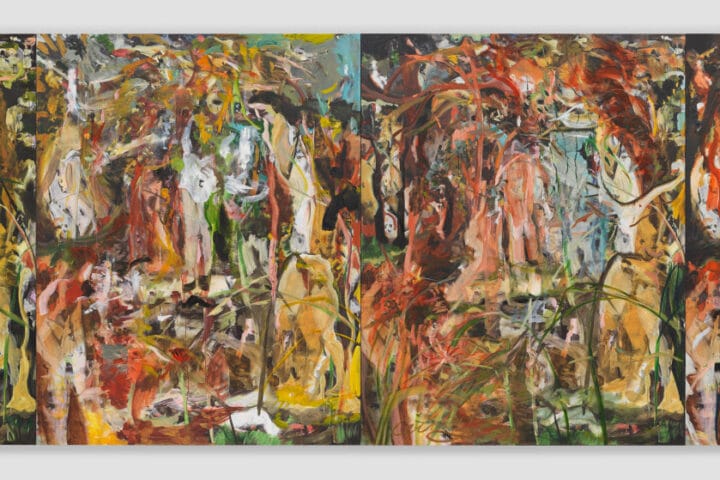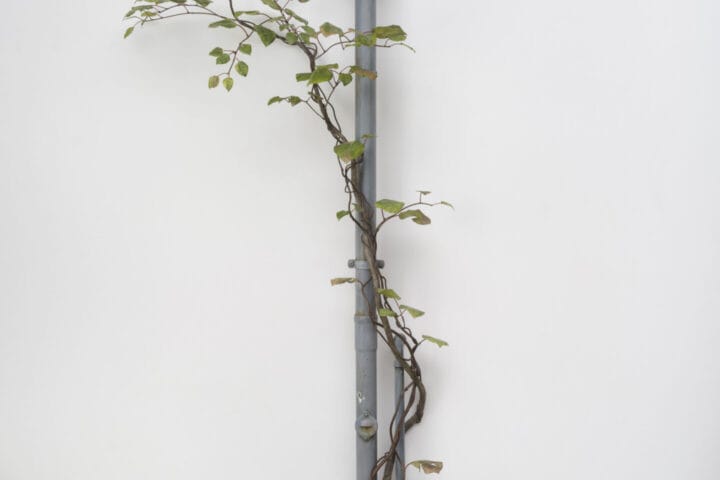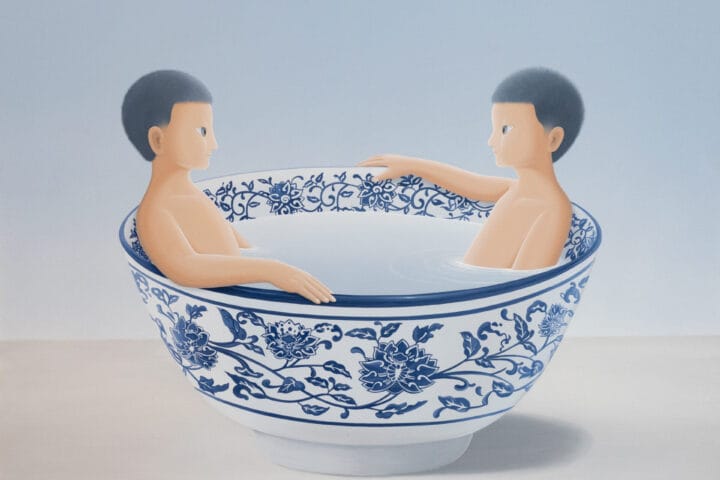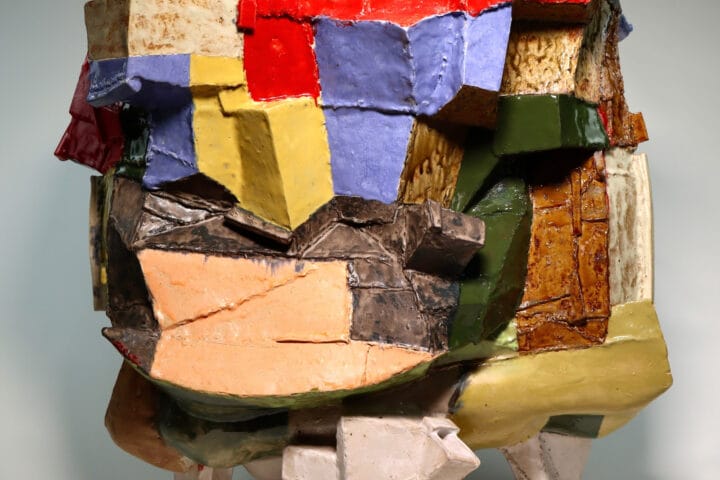Flowers Gallery is delighted to launch the inaugural presentation for the new Insiders platform, a behind-the-scenes online programme delving into a broad range of artist’s studio processes and practices, to gain insights into new or developing bodies of work.
For the first presentation, Flowers Gallery takes an insider look into the studio of British artist Julie Cockburn, finding out what has inspired her new body of embroidered found photographs and ceramic-photographic hybrids. Cockburn’s work often centres around found photographs – using vintage studio portraits and anonymous landscape photographs, snapshots and ephemera to create new images with contemporary resonance. The images are altered through processes of splicing, layering and juxtaposition, often embellished with intricate patterns of embroidery and beading.
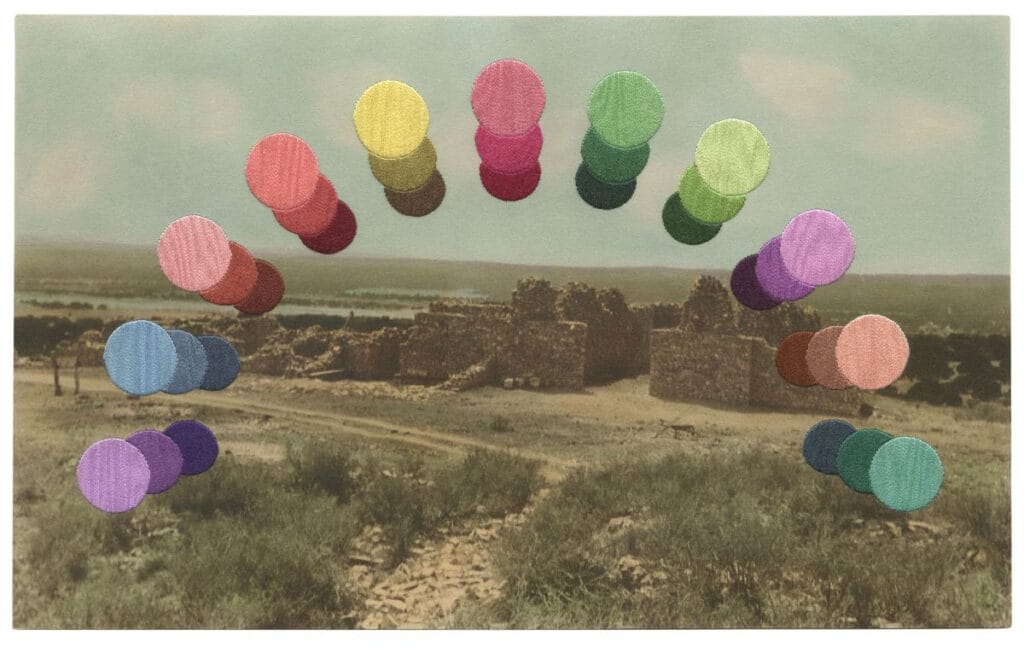
In this presentation, geometric embroidered shapes in works such as Firefly Waterfall and Gateway allude to the practice of drawing, as though reimagining the potential for the image extending in space. Chromatic orbs and spherical shapes cascading or floating across images of waterfalls and picturesque landscapes appear to tease the image into three dimensions.
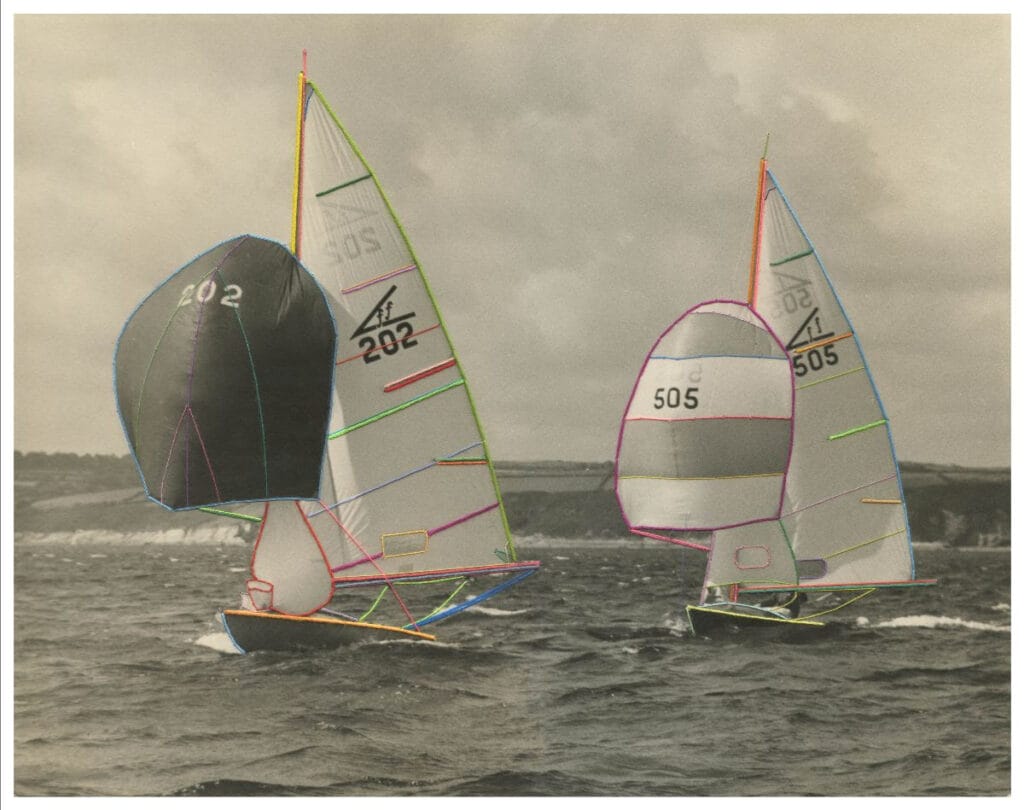
Originally trained as a sculptor, Cockburn’s latest interventions into the surface of found photographs has extended into ceramic forms, where painterly ‘strokes’ of glazed ceramic intersect the image. The sequence of works titled Eyes Nose Mouth takes a playful approach to the construction of images, assembling sculptural glazed ceramic eyes or mouths alongside cut-out book pages featuring decorative ceramics, to create their new anthropomorphised presence. Also included is The Field, an earlier altered found painting incorporating glazed earthenware, shortlisted for the John Moores Painting Prize in 2012. Alongside this, a more recent work Wedding Vows (2022), revisits the combination of paint and ceramic, in which the fluid and intuitive brushstrokes of the painting are strewn with prismatic glassy fragments. Here, the painted and glazed elements collide to create a seemingly haptic surface, moving between flat form into three dimensions. As Cockburn says, “I can’t resist disrupting the picture plane.”
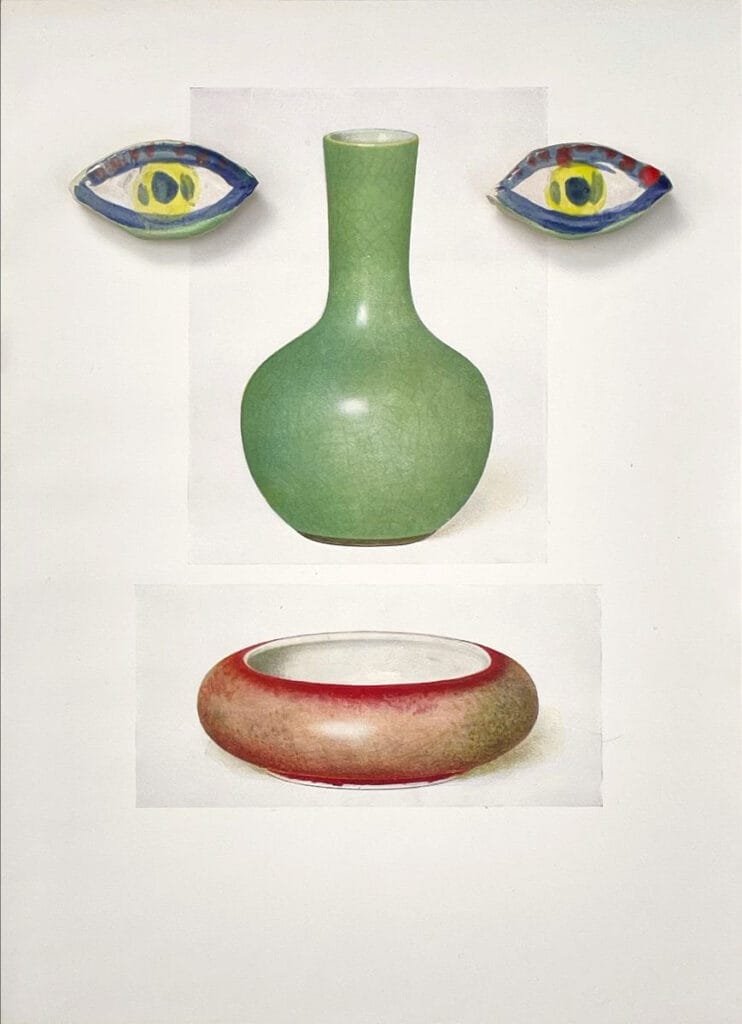
Cockburn describes all of her works as a form of hybrid, combining disparate found elements, from photographs, to painting, sculpture, embroidery, or ceramics, fusing new shapes and forms with the pre-existing to explore their potential for new meaning. She says, “It’s just the way I work, trying to keep as much of the integrity of the found materials but shifting them away from their original contexts.”


